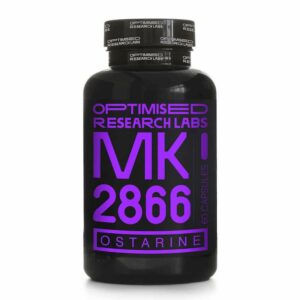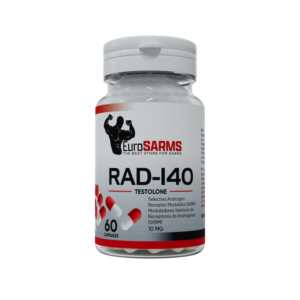The world of fitness, particularly muscle building, is constantly evolving, with new supplements and performance enhancers emerging daily. A topic that has gotten a lot of attention recently is selective androgen receptor modulators (AKA SARMs) – see “SARMs Goblins”. These compounds are being heavily debated, with opinions sharply divided into two camps. On one side, proponents hail SARMs as a revolutionary, “side-effect-free” alternative to traditional anabolic steroids. On the other, skeptics argue that SARMs are overhyped and largely ineffective or at least not side-effect-free.
In reality, the truth about SARMs lies somewhere in between these extremes. SARMs do indeed bind with high affinity to androgen receptors, facilitating tissue-selective anabolic effects. This means they can effectively promote muscle growth and improve physical performance. However, they are not without their drawbacks and potential side effects. Understanding the nuances of SARMs, including their benefits and risks, is crucial for anyone considering using them.
This article aims to cut through the hype and provide a balanced overview of SARMs. We will explore what SARMs are, examine the common misconceptions surrounding them, and discuss both their potential benefits and the inherent risks. By the end, you will have a clearer understanding of SARMs, enabling you to make informed decisions about their use.
What Are SARMs?
Selective Androgen Receptor Modulators, or SARMs, represent a class of compounds that are typically relegated to the sports and bodybuilding world. Unlike traditional anabolic steroids, which can affect multiple tissues in the body indiscriminately, SARMs are designed to target specific androgen receptors in muscle and bone tissues. This targeted approach is what sets SARMs apart and forms the basis for their appeal.

SARMs are synthetic ligands that bind to androgen receptors, much like how anabolic steroids work. However, the key difference lies in their selectivity. SARMs aim to provide the muscle-building benefits of steroids without the widespread androgenic effects, such as hair loss, prostate enlargement, and deepening of the voice.
Mechanism of Action
SARMs exert their effects by binding to androgen receptors, which are proteins located in various tissues, including muscle, bone, and fat. Upon binding, SARMs activate these receptors, leading to an increase in protein synthesis and muscle growth. This process is similar to the way anabolic steroids work, but SARMs are, again, more selective, meaning they primarily affect muscle and bone tissues, minimizing undesirable side effects.
Common SARMs
There are a lot of SARMs currently available, each with its unique profile and benefits. Some of the most popular and widely discussed SARMs are:
- Ostarine (MK-2866): Known for its ability to promote lean muscle mass and improve bone density.

[Image sourced from Time 4 Nutrition] - Ligandrol (LGD-4033): Favored for its potent muscle-building effects.

[Image sourced from Swiss Chems] - RAD-140 (Testolone): Highly regarded for its strength-enhancing properties.

[Image sourced from Euro SARMs]
The Hype vs. Reality
As mentioned above, the fitness and bodybuilding communities are talking a lot about SARMs, with a lot of young guys (and gals, though much less so) using them to cut corners and get “jacked” ASAP. There seem to be about as many young social media fitness influencers using them as there are older fitness professionals calling them out and discouraging their use. Understanding the basis of these divergent views is essential to forming a balanced perspective on the use of SARMs.
Pro-SARMs Group
Proponents of SARMs often tout them as a groundbreaking alternative to anabolic steroids, claiming they offer similar muscle-building benefits without the associated side effects. This group believes that SARMs provide a safer way to enhance physical performance and achieve a lean, muscular physique. The idea of a “side-effect-free” anabolic agent is particularly appealing, driving much of the hype around SARMs.
Anti-SARMs Group
On the opposite end of the spectrum, critics argue that SARMs are overrated and question their effectiveness. They contend that the benefits of SARMs are exaggerated and that these compounds may not deliver the promised results. Additionally, skeptics are wary of the potential health risks and side effects associated with SARMs, emphasizing that these issues are often downplayed or ignored in the hype.
The Truth Between The Extremes
The truth about SARMs lies in the grey area between these two extremes. We have to admit, that well… SARMs do work, they do bind with high affinity to androgen receptors and they do promote tissue-selective anabolic effects, but… they are not without risks – there’s no free lunch in the natural world guys. SARMs can significantly enhance muscle growth and physical performance, but they are definitely not free from side effects.
Understanding SARMs Studies and Misconceptions
One of the most significant challenges in understanding SARMs is interpreting the scientific studies that evaluate their effectiveness and safety. The way SARMs are categorized and compared can lead to misunderstandings, making it crucial to dissect the data carefully.
Misinterpretation of Data
The category of SARMs is a broad one, encompassing compounds with varying levels of tissue selectivity and efficacy. Effective SARMs and less effective SARMs are often grouped together because they share a common characteristic: a better anabolic-to-androgenic activity ratio than testosterone. This generalization can be misleading for those trying to understand the true potential and risks of specific SARMs.
Benchmarking Against Testosterone
Testosterone is commonly used as the reference androgen in evaluating SARMs. However, this comparison is inherently flawed due to testosterone’s lack of tissue selectivity. Testosterone is metabolized into dihydrotestosterone (DHT), a far more androgenic compound that affects multiple tissues indiscriminately.
The androgenic activity of testosterone and its metabolites can lead to significant side effects, especially in populations like older adults or women, where masculinizing effects are undesirable. This non-selectivity is why testosterone is considered subpar for treating conditions like muscle wasting diseases in clinical settings. SARMs were developed to mitigate these effects by being more tissue-selective. However, the degree of selectivity varies widely among different SARMs.
Tissue Selectivity Variability
SARMs are evaluated based on their anabolic-to-androgenic ratio compared to testosterone. However, this comparison doesn’t account for the wide range of tissue selectivity among different SARMs. For example:
- SARM #1 might have a tissue selectivity ratio of 500:1, meaning it is highly selective for muscle and bone tissues with minimal androgenic effects.
- SARM #2 might have a tissue selectivity ratio of 4:1, indicating significantly less selectivity and a higher potential for androgenic side effects.
Despite both being classified as SARMs, their effectiveness and safety profiles are vastly different. This discrepancy highlights the importance of not treating all SARMs as equal, as their specific properties can vary significantly.
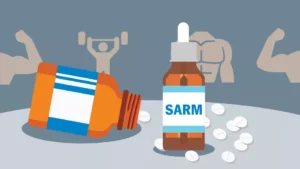
Misleading Comparisons
When studies categorize various SARMs together, they have a tendency to create a misleading perception of their overall efficacy and safety. For instance, a highly selective SARM might be viewed as equally effective as a less selective one simply because both are more selective than testosterone. This simplification ignores the nuanced differences between individual SARMs and can lead to incorrect conclusions about their potential benefits and risks.
Pros of SARMs
While there are legitimate concerns and misconceptions about SARMs, they do also offer several notable benefits that have contributed to their popularity. Here are the key advantages of SARMs:
Tissue Selectivity
SARMs are designed to selectively target androgen receptors in muscle tissues, leading to increased protein synthesis and muscle growth. This targeted approach helps users gain muscle mass and strength more effectively than with traditional anabolic steroids, making SARMs attractive to bodybuilders and athletes.
Unlike anabolic steroids, which can cause widespread androgenic effects such as hair loss and prostate issues, SARMs primarily affect muscle and bone tissues. This selectivity reduces the likelihood of unwanted side effects, providing a safer alternative for those looking to enhance their physique.
Potential Therapeutic Uses
SARMs show promise in treating muscle-wasting conditions like sarcopenia (age-related muscle loss) and cachexia (muscle wasting due to chronic illness). By preserving and building muscle mass, SARMs can improve the quality of life for individuals suffering from these conditions.
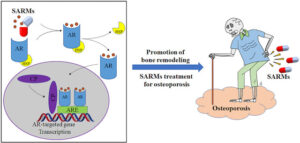
Some SARMs can also enhance bone density and strength, benefiting those at risk of osteoporosis or other bone-related diseases. Improved bone health contributes to overall physical resilience and reduces the risk of fractures.
Cons of SARMs
While SARMs potentially offer some benefits, users must recognize and understand the potential drawbacks and risks associated with their use. Here are the main considerations:
Hormonal Imbalance
One of the primary concerns with SARMs is their impact on natural testosterone production. SARMs can suppress endogenous testosterone levels, potentially leading to hormonal imbalances. This suppression may require post-cycle therapy (PCT) to restore normal hormone levels after discontinuing SARM use.
Liver Toxicity
Some SARMs have shown potential for liver toxicity, especially with prolonged or high-dose usage. Elevated liver enzymes and other markers of liver damage have been reported in studies and user experiences, highlighting the importance of monitoring liver health when using SARMs.
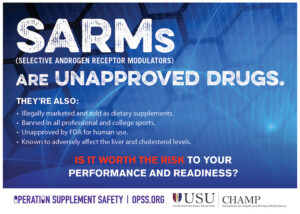
Other Potential Side Effects
Additional side effects associated with SARM use may include getting JACKED – kidding – hair loss, acne, and increased aggression are commonly reported. While these effects are generally less severe than those of anabolic steroids, they can still certainly impact users’ health and well-being.
Regulatory and Legal Concerns
SARMs are not approved for human use by the FDA and are often sold as research chemicals or dietary supplements. This lack of regulation means that the purity, potency, and safety of SARM products can vary widely, posing potential risks to consumers.
The legal status of SARMs varies by country. In some places, SARMs are classified as controlled substances, while in others, they may be legally available but with restrictions. Users should be aware of and comply with local laws regarding the purchase, possession, and use of SARMs.
Closing Thoughts
In conclusion, the discussion surrounding SARMs reveals a complex landscape of benefits, risks, and misconceptions. Initially developed to provide selective anabolic effects with reduced androgenic side effects compared to traditional steroids, SARMs have gained attention for their potential in muscle building and therapeutic applications.
We explored the mechanisms by which SARMs selectively target androgen receptors in muscle and bone tissues, promoting muscle growth and potentially improving bone density. This targeted approach offers advantages over non-selective steroids, particularly in reducing undesirable side effects such as hair loss and prostate issues.
However, our exploration also highlighted the limitations and controversies surrounding SARMs. The categorization of various compounds under the umbrella term “SARMs” can lead to misconceptions about their efficacy and safety. Studies often benchmark SARMs against testosterone, a flawed standard due to its non-selectivity and potential for androgenic side effects.
Also, while SARMs offer benefits such as enhanced muscle growth and potential therapeutic uses in conditions like muscle wasting diseases, they are not without risks. These include hormonal imbalances, liver toxicity, and other side effects that vary depending on the specific SARM used and individual factors.
The regulatory landscape adds another layer of complexity, with SARMs occupying a legal gray area in many jurisdictions. Their unauthorized status for human use by regulatory bodies like the FDA underscores the importance of caution and informed decision-making when considering their use.
In light of these considerations, individuals interested in SARMs should weigh the potential benefits against the risks, seek guidance from healthcare professionals, and adhere to legal guidelines. Ongoing research and regulatory developments will continue to shape our understanding of SARMs and their role in sports, fitness, and medical settings.
By cultivating a balanced understanding of SARMs — acknowledging their potential while remaining vigilant about their limitations and risks without getting lost in the hype — we can better navigate the evolving landscape of performance-enhancing substances responsibly and safely.
Good luck gentlemen.


